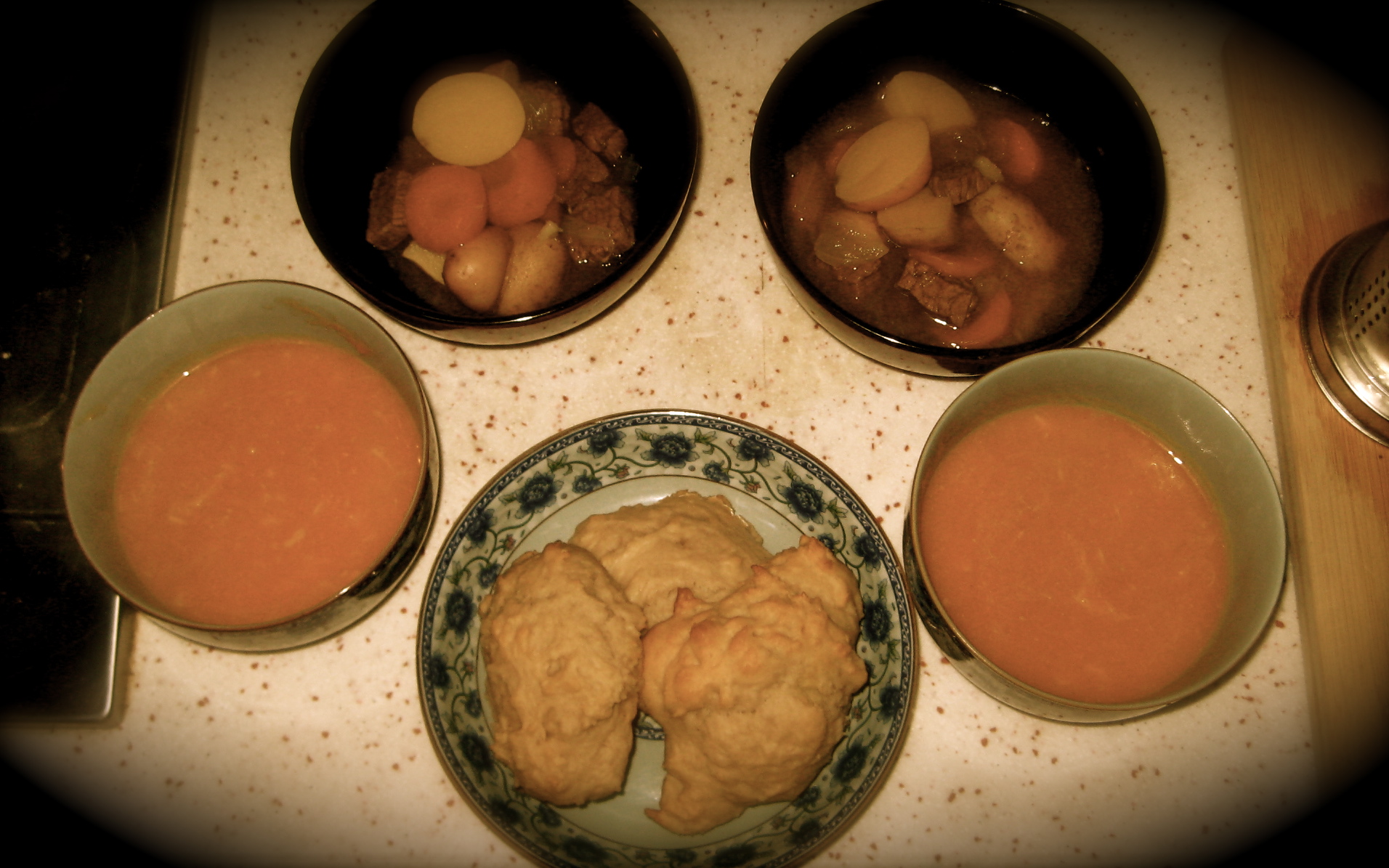
شىنجاڭ Uyghur Irish Stew
Now this one…this one’s going to be a search engine disaster in the making. It may also be the one that gets me pushed over the proverbial edge of the Great Firewall. Sorry.
This stew is technically a basic Irish stew, though lacking in lamb and Guinness. I did, however, have some leathery supermarket Chinese beef and a bottle of Sinkiang stout from the far, far west of China, from what’s known on maps as the Xinjiang Uyghur Autonomous Region (or شىنجاڭ ئۇيغۇر ئاپتونوم رايونى or Shinjang Uyghur Aptonom Rayoni or 新疆维吾尔自治区). I made the stew yesterday, along with the spicy roasted pumpkin soup. It was a lovely autumnal dinner.
After nearly three years in China, with my Mandarin abilities being freakishly stunted in spite of repeated efforts at learning (I think I might be tone deaf), I occasionally find myself secretly wishing we could have moved to, say, Kashgar. Because, absurd as it may sound, at least I’d be able to communicate half-way intelligently there. My 6 years in Turkey have finally proven to be of some use in retrospect: I can understand elementary Uyghur with pretty much no effort.
About a year ago, I downloaded a Teach Yourself Uyghur pdf textbook (as one does) from a university website and realized after only 2 minutes of study that I knew far more Uyghur than I knew of Mandarin after 80 hours of intensive coursework. My battered self confidence rose somewhat with that realization. Turkish is to Uyghur what Flemish is to Dutch or Afrikaans, at least at the elementary level. They share a lot of Arabic, Farsi and Turkic root words, just like English can be deconstructed back into its French, Germanic and Old English/Anglo Saxon origins. It’s fascinating.
Can I show you some basics? The words on the left are Uyghur and the ones on the right are Turkish. If there’s just one word, it’s the same in both languages. The Uyghur spellings were taken from the textbook I found, so any irregularities are theirs. I wouldn’t know any better. The Turkish equivalents came from my faulty, tired brain, so if I made any spelling mistakes I apologize.
My Handy Dandy Basic Turco-Uyghur Glossary
- bu- this
- shu-şu- that
- ne- what?
- ne(de)- at what?
- qanche- kaç – how many?
- kitab/p- book
- kim- who
- -mu (question suffix for yes/no questions)
- u- o – he/she/it
- adem- adam- man
- bir- one
- birinchi- birinci- 1st
- ikki- iki- two
- uch- üç- three
- tort- dört- four
- besh- beş – five
- alte- altı- six
- yette- yedi- seven
- sekkiz- sekiz – eight
- toqquz- dokuz- nine
- on- ten
- on bir- eleven
- on ikki/iki- twelve
- yigirme- yirmi- 20
- ottuz- otuz- 30
- az- few
- yüz- 100/face
- koz- göz- eye/eyes
- yerim- yarım- half
- gül- flower (in Turkish it’s specifically a rose)
- depter- defter- notebook
- söz- word
- ders- lesson
- derslık- pertaining to lesson
- sohbet- dialogue/conversation
- qelem- kalem- pen
- kichik- küçük- small
- oghul- oğul- boy/son
- isim- name/noun
- ish- iş- work
- yengi- yeni- new
- kerek- gerek- necessary
- ich- iç – inner part, within
- her- each
- it- dog (but kind of rude in Turkish, like ‘itin olurum’- ‘I wanna be your dog’)
- at- horse
- beliq- balık- fish
- pikir- fikir- idea
- eng- en- most (superlative)
- aq- ak- white
- emma- ama- but
- tashliq- taşlık- covered in stone, gravelly (taş- stone, as in Tashkent= Stone City)
- tekrar- repetition
- top- ball
- su- water
- bugün- today
- belkim- belki- maybe
- bil(mek)- to know
- kelmek- gelmek- to come
- kormek- görmek- to see
- qara- kara- black/dark
- yeshil- yeşil- green
- qizil- kızıl- red
- manta- mantı- steamed dumplings
- hem- also/as well
- we- ve- and
- yash- yaş- age
- etmek- to do
- ye/yemek- to eat
- til- dil- language/tongue
- demek- to say/speak
- sen/siz- you/y’all (polite singular, but also plural in Turkish)
- shepke- şapka- peaked cap
- kun- gün- day/sun
- yaz(maq/mak)- to write
- oqu(maq)- oku(mak)- to read
- yer- place/location
- satmaq- satmak- to sell
- alma- elma- apple
- uzum- grape
- bashqa- başka- other/another
- yumshaq- yumuşak – soft
- Yurt- hometown/place of origin
- meydan- town square
So yes, I feel slightly less stupid when dealing with the Uyghur language, which is a welcomed feeling after nearly three years of feeling like an incomprehensible doofus in Mandarin. And so, my tribute to them in the form of a really lovely, comforting autumnal stew.
Ingredients
- A bottle of stout
- Beef or lamb, in cubes, from a slab about the size of three decks of cards
- Spuds and carrots and about half a medium onion
- Worcestershire sauce
- Salt and pepper
You’ll need a wok to brown the meat and a crock pot or stew pot to cook everything together.
The process is very simple.
- Cut up all the veggies into shapes and sizes that please you.
- Cube the meat and marinate it for maybe an hour with some worcestershire sauce and a little salt and pepper
- Brown the meat in the wok. The beef we get is weirdly watery and takes a while to brown.
- Sautee the onion in the beef detritus in the wok, adding a little more oil.
- Throw everything into the crock pot, including the bottle of stout and a bit of water so it has something to stew in, and cook on high for an hour then on low for another hour or two. It gets better with time so we tend to leave it going for the afternoon. Check every so often to make sure the liquid levels are okay.
Done
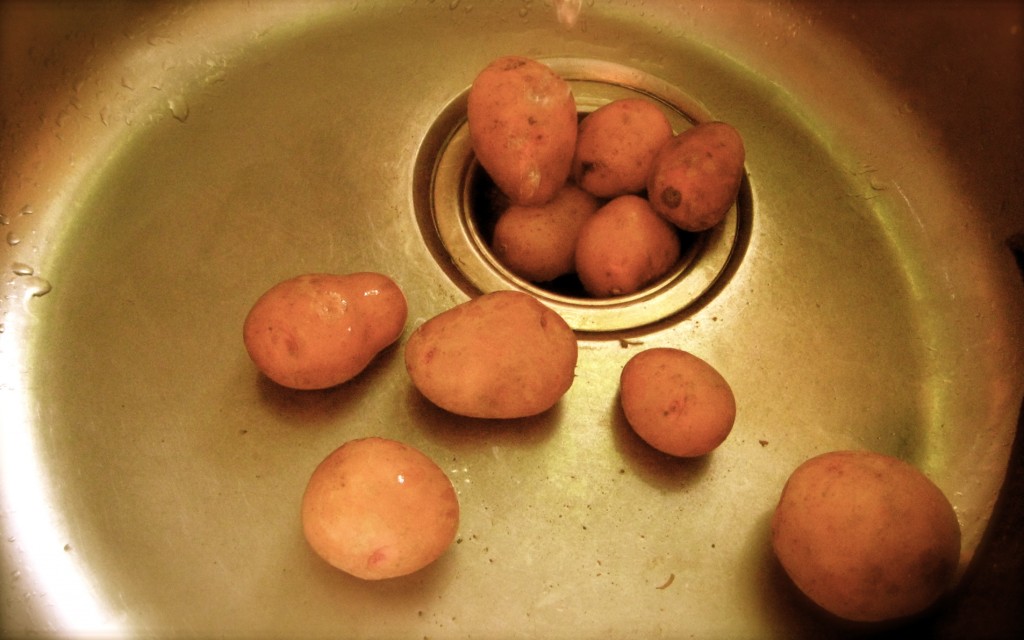
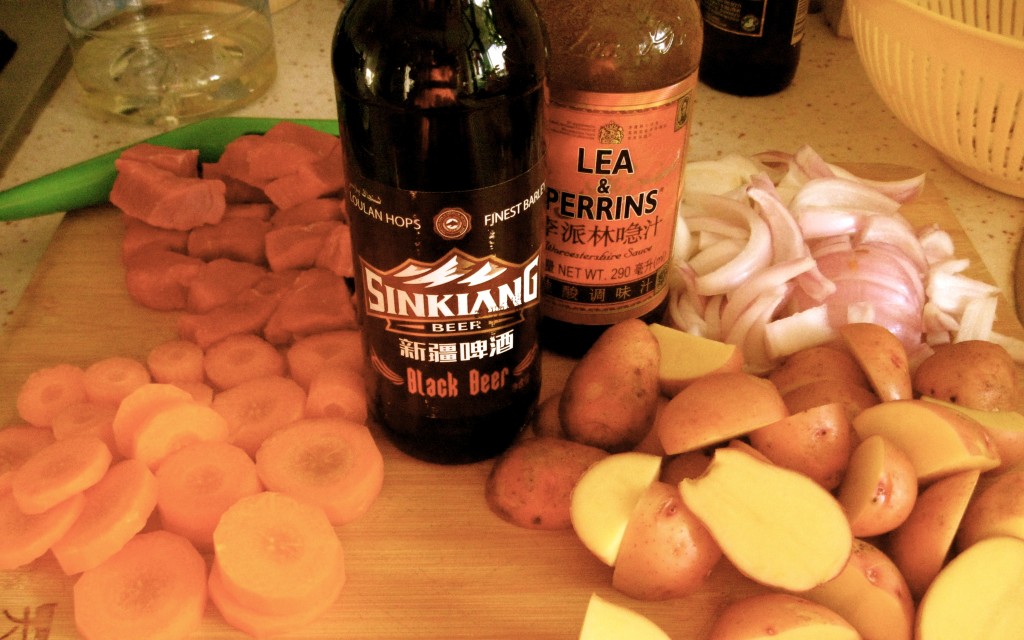
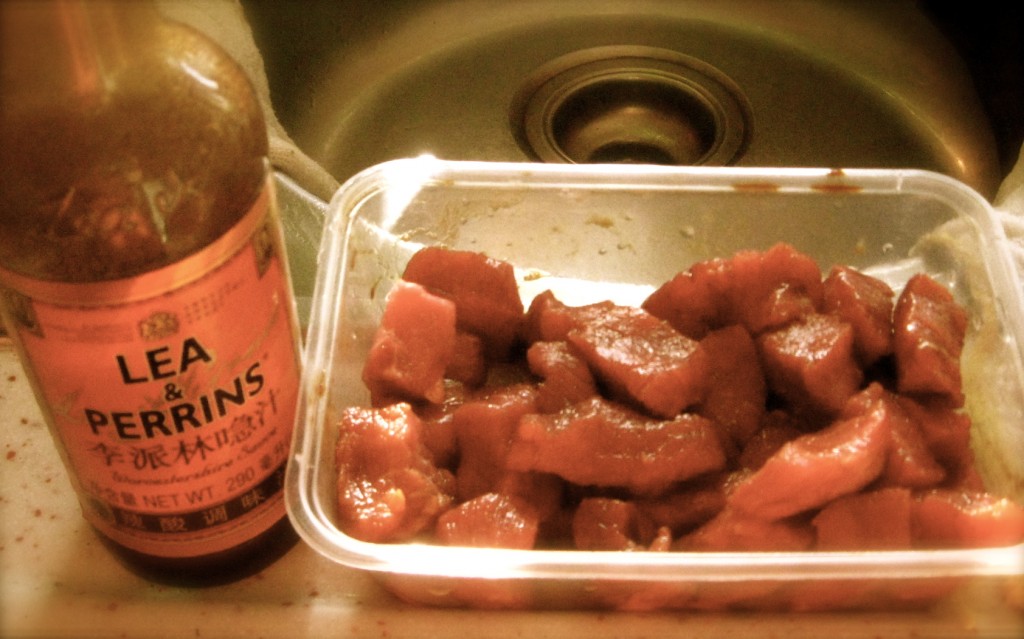
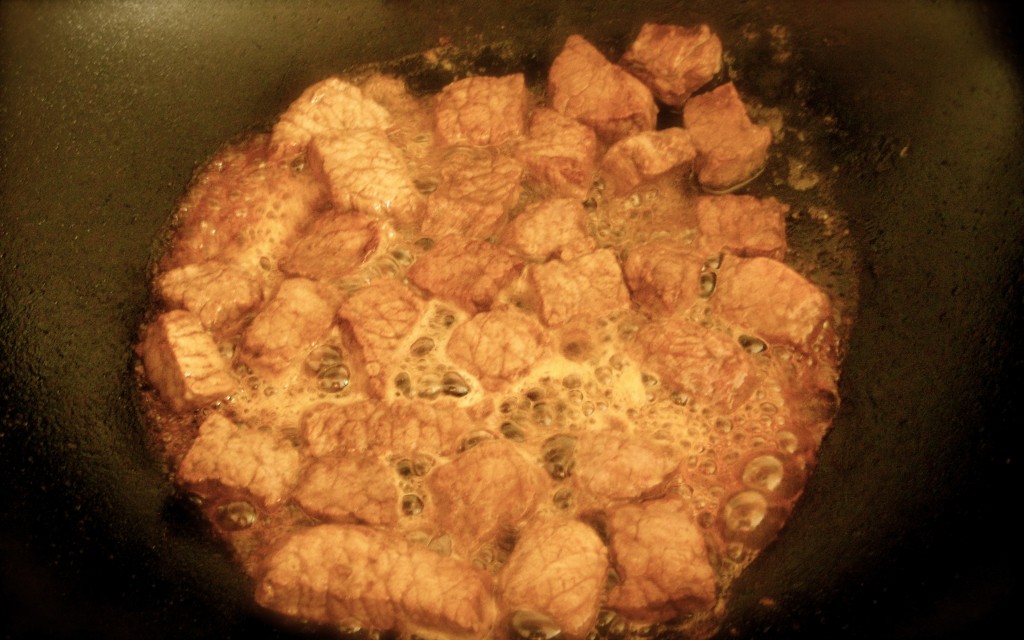
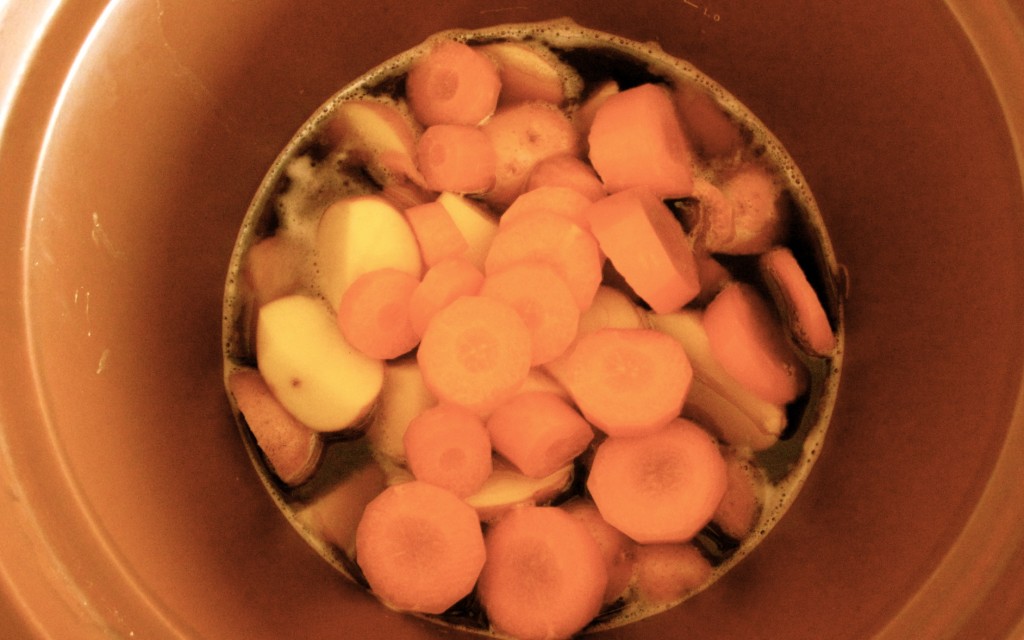
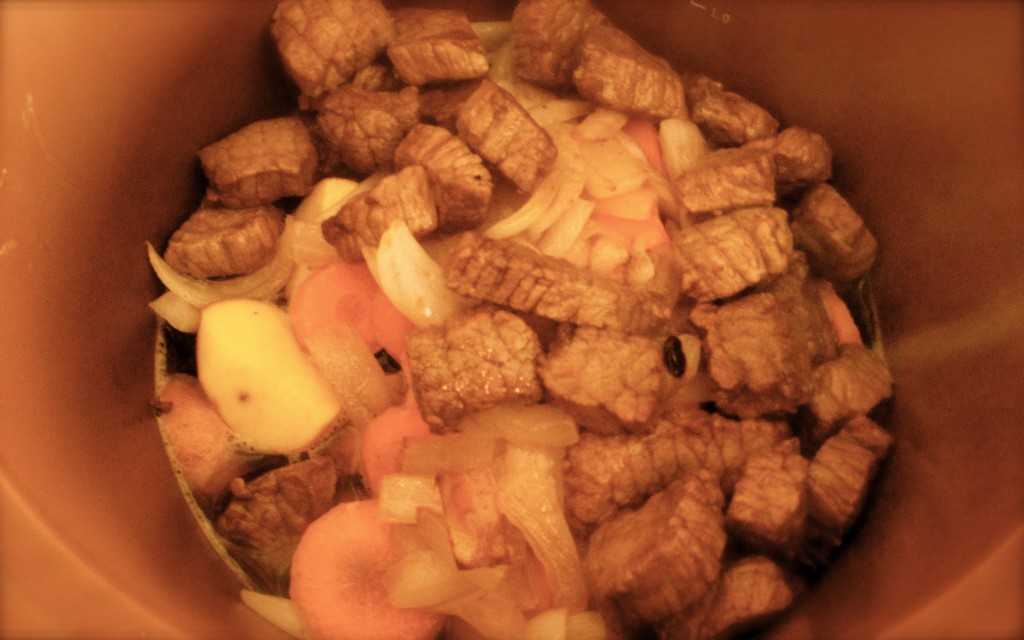
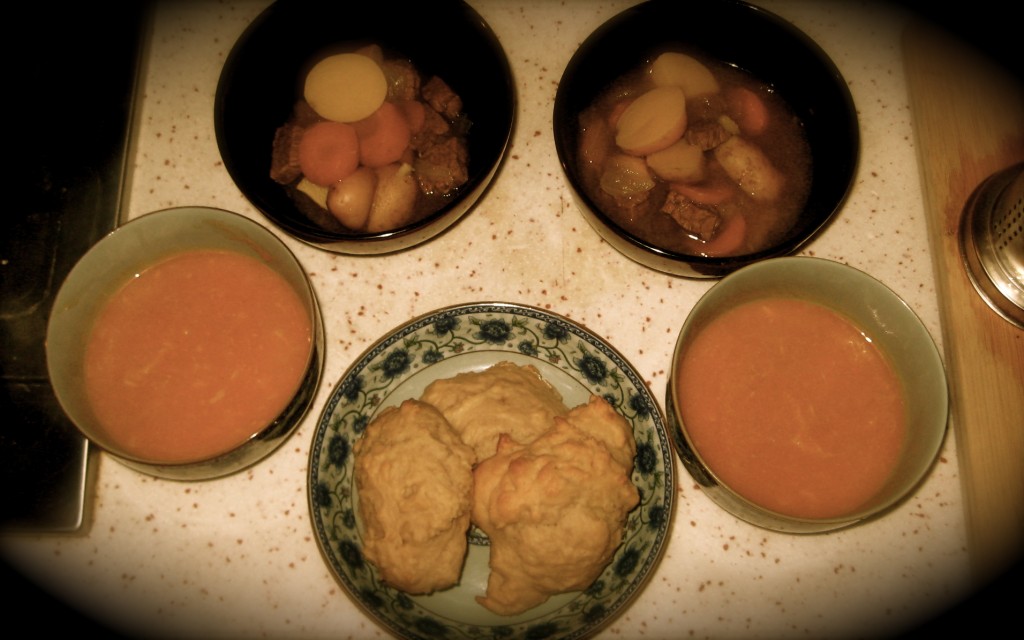
You May Also Like

Wok Fajitas! Fajitas in the Wok! Fajitas con Wok!
March 30, 2012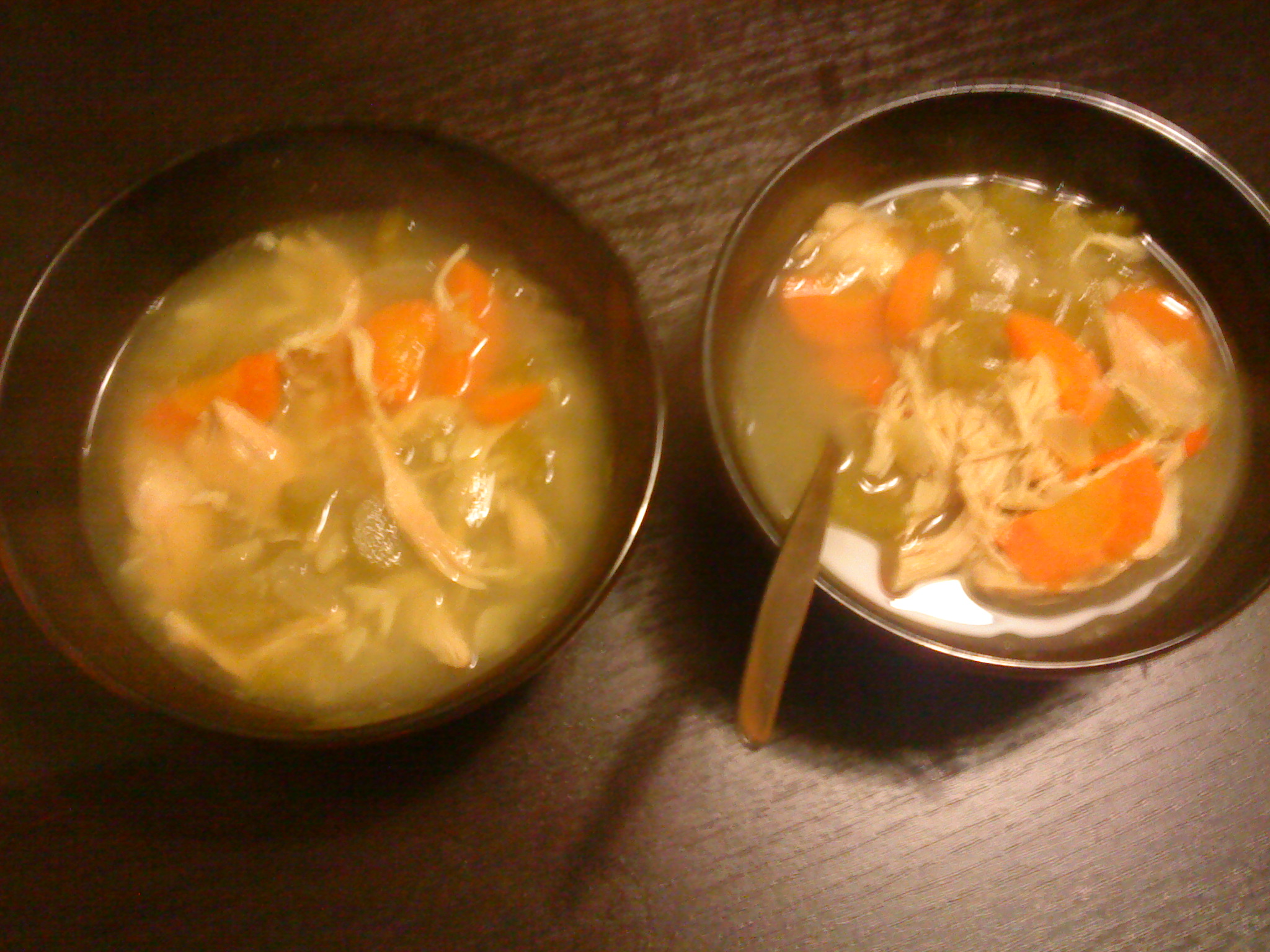
Chicken Soup Cure for Sino Black Lung
November 30, 2011
11 Comments
Kirstin
I bet you can also speak elementary Uzbek, Kyrgyz, Kazakh, and Turkmen too. I studied Arabic for three years before switching to Russian, and the few similarities between Arabic and Turkic languages are absolutely infuriating compared to how much I’m struggling на русском!
Kirstin recently posted..where is home?
MaryAnne
I know that I can follow Azeri newscasts, though it’s not easy. When I lived in Istanbul I used to sometimes watch AzTV because their variety shows were brilliant (like, a half dozen little girls in poufy dresses and old skool Soviet hair bows dancing to the Prodigy’s Smack My Bitch Up). I’d love to see how much of the other ‘Stan languages I can pick up. When I was spending a lot of time in Arabic speaking countries back around 2005-2006, I was amazed by how much I could get by on using just shared pleasantries, greetings and shared root words (book, pen, square, library, etc).
I’m always curious about differences though- I mean, in Turkish, a kazakh is a sweater… is Kazakhstan the land of sweaters? 🙂
Sasha
This looks delicious! I have another reason for to move to Kashgar besides your gift with the language, damn good lamb! Oh man I love Xinjiang food!
MaryAnne
Oh, me too! I love the whole lamb/yogurt/bread theme! Yum!
Selly
This looks so so so very yummy and really easy to manage…I would manage to make that without setting the kitchen on fire…yet another great recipe!!! Thanks for sharing!
MaryAnne
It’s very, very easy- we make it all the time (which is maybe why my instructions are so vague and blase…). Do make it- it’s comfort food!
Gwyneth
I miss Xinjiang, I really do. Not for the lamb, but for the bread. All of it, in its carbohydrate goodness. Also, whatever that dessert thing is with the honey and the walnuts and the dried fruit. Now, if you could figure out how to make that, perhaps? *grins evilly*
MaryAnne
I love bread. We can get Xinjiang bread here, but the folks nearest to us who sell it (a street-side kebab joint), have a tendency to sell stale rock-like round loaves— an affront to bread-loving cultures worldwide! I know from my travels what that bread *can* be so that’s just madness! Now, as for the honey, walnuts and dried fruit…tell me more!
Nicola @ unhip squirrel
Oooooooh… this looks awesome! It’s also getting to be that ‘stew’ time of year. “You’ll need a wok to brown the meat” – you make me chuckle 🙂
Nicola @ unhip squirrel recently posted..chai-spiced apple galette
MaryAnne
Heh, yeah- I suppose that was an odd sounding directive… but since that’s often the default pot here, it had to be said 🙂 And you know, a well seasoned wok does an AWESOME job of browning!
TracyAnn0312
Wow these taste wonderful. I love to have it. Thanks for sharing the recipe. These is good these winter.